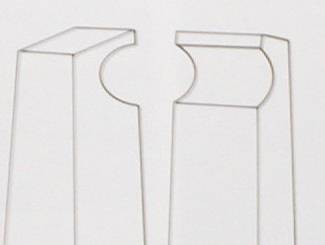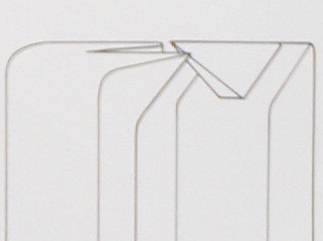a
|
|||||||||||||
| Forceps are designed for seizing or holding tissues or
sutures. Many different designs of forceps are available in
ophthalmic surgery.
Forceps used in ophthalmic surgery can be broadly divided into two types:
An ophthalmic forcep has three parts (see the St.Martin forceps below):
The working ends determines the function of the forceps
and may be tooth or smooth. With tooth forceps, the teeth may be
interdigitating or opposing (see picture below).
The opposing type causes less trauma to the tissue but provides less fixation of the tissue compared with the interdigitating type. The standard interdigitating type for the anterior segment surgery is of the one-into-two pattern (see picture above). The teeth may be set at right angle (Bishop-Harmon) or are forward-angled (Castroviejo). The forward-angled forcep allows greater ease in gasping and manipulation of tissues. The shaft connects the tips to the handle. A narrow and thin shaft is ideal as it does not obstruct the surgical view. The handles in the ophthalmic forceps are designed to
be held like pencils to provide ease for manipulation and stability. The
handles may be round or flat. A round handle allows easy rotation with
the fingers only; whereas a flat handle requires pronation of the wrist
for rotation. However, a flat handle gives a convenient reference point
by feel as the surgeon knows the alignment of the working end of the instrument
relative to the flat aspect of the handle.
|



